Your Product Basket
- - +81.12€
Cart Total:
65.42€
Showing 1–16 of 44 results



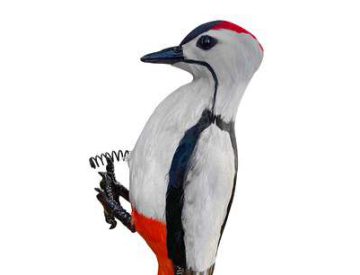


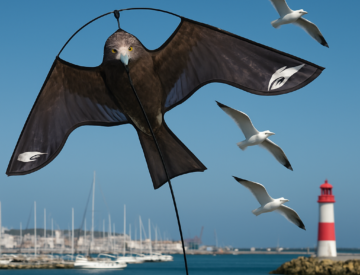
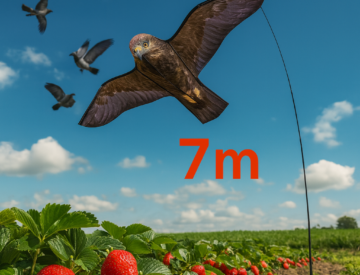
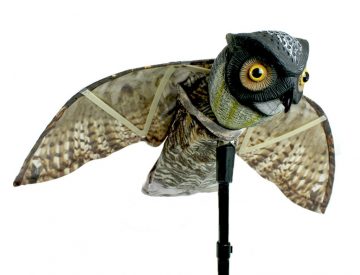
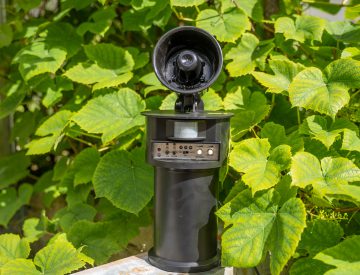


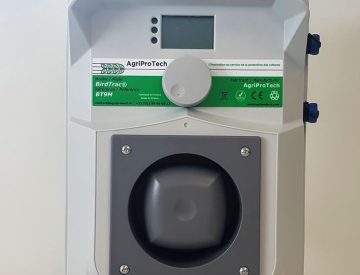

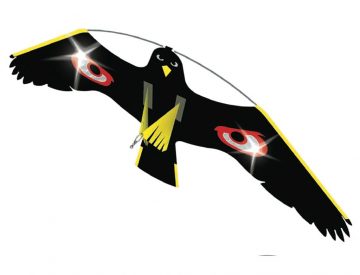
Bird deterrent devices are typically designed to prevent birds from coming to a specific area. This includes visual scare tactics, such as bird scare kites or predator decoys and auditory devices. The idea behind a bird deterrent is to make the area unattractive or uncomfortable for birds, so they choose to go elsewhere.
However, if you are looking for solutions to drive birds away from an area that they have already chosen to frequent, take a look at our selection of bird repellent devices.
Bird deterrent devices are typically designed to prevent birds from coming to a specific area. This includes visual scare tactics, such as bird scare kites or predator decoys and auditory devices. The idea behind a bird deterrent is to make the area unattractive or uncomfortable for birds, so they choose to go elsewhere. However, if you are looking for solutions to drive birds away from an area that they have already chosen to frequent, take a look at our selection of bird repellent devices.
Bird deterrent devices are used to deter birds from entering specific areas. They come in various forms, but the most commonly used ones are bird scarer kites, predator decoys and audio appliances.
Bird scarer kites have proven to be effective bird deterrents because they rely on the natural instinct of birds to avoid potential predators. When birds of prey like hawks and falcons are seen hovering over an area, other birds tend to steer clear. By imitating the appearance and movement of these predators, bird scarer kites create a similar effect that keeps birds away from an area.
In addition to their scary appearance, the kites also move unpredictably in the wind, adding to the illusion of a predatory bird. This movement keeps birds on edge, making them less likely to settle.
Bird scaring kites are not only an effective bird deterrent, but they are also an eco-friendly option as they do not rely on chemicals or loud noises to deter birds. They are relatively cost-effective and can easily be installed in a variety of settings, including vineyards, agricultural fields, and public spaces. This makes the kites a reliable and valuable tool for anyone looking to protect their property or crops from bird damage.
Decoys are another example of visual bird deterrents that mimic the appearance of natural predators that birds fear such as owls, hawks, foxes, and wolves. When birds see a predator decoy, they immediately perceive it as a threat and are likely to avoid the area.
The most efficient predator decoys also feature some movement, which further enhances their effectiveness at deterring birds. Most models are wind-powered and will move or say in the breeze, providing a more terrifying effect.
Some decoys feature birds of the same species that they are designed to deter. Such decoys are particularly efficient in deterring territorial birds like woodpeckers and herons, tricking them into thinking that the area is already occupied.
Audio devices are an effective way to keep birds away from a designated area. These devices are designed to emit sounds that birds find unpleasant or threatening, causing them to avoid the area. Some audio deterrents use mimicry of predator calls or distress calls, signalling to birds that the area is unsafe. Others use ultrasonic frequencies that are unpleasant to birds.
Audio devices designed to deter birds can vary greatly in terms of their efficiency depending on the specific features of the device. For example, smaller, audio deterrents that are designed for use in home gardens may be less efficient at deterring large flocks of birds over large areas of land. These devices are typically more affordable, but may not provide enough power to ward off birds from agricultural properties.
On the other hand, more powerful audio devices that are designed for use in large agricultural fields, are typically louder and utilise a wide range of sounds to keep birds at bay.
Overall, bird deterrent devices are safe, eco-friendly, and effective. They are easy to install and maintain, and they can bring you the peace of mind knowing that your property is protected. Since there are a variety of bird deterrents available, it’s important to do your research and choose a device that’s suited for your specific situation, to ensure the most effective results.
Bird deterrents are typically devices or methods used to prevent birds from coming to a specific area in the first place. This could include visual scare tactics, such as bird scarer kites or predator decoys, or audio devices. The idea behind a bird deterrent is to make the area unattractive or uncomfortable for birds, so they choose to go elsewhere.
On the other hand, bird repellents are used to drive birds away from an area that they have already chosen to frequent. This is often a more complicated task because once birds have established a place as their nesting area or feeding ground, they are very reluctant to leave. Bird repellents thus usually create a more challenging and unpleasant experience for birds that they are less likely to get used to or tolerate.
It is important to note that some products may function as both deterrents and repellents, depending on their specific design and application. Additionally, the effectiveness of bird deterrents and repellents may vary based on the type of bird and the specific situation.
Chasing birds away from a place they’ve already chosen to frequent can be very difficult. The reason for this is that once birds have established a place as their nesting area or feeding ground, they become pretty attached to it and are reluctant to leave.
On the other hand, keeping birds away from a certain place is generally easier because this involves preventing them from becoming attached to the area in the first place. By using simple devices such as decoys, or sonic devices, it is possible to create an environment that is unappealing to birds and discourage them from settling down in the area.
Birds tend to be more attracted to certain features in an environment, such as sources of food and water. By reducing or removing these attractions, you can make the area less appealing to birds and reduce the likelihood of them becoming attached to it.
Birds do tend to eventually get used to bird deterrent devices if they have already grown attached to an area. This is because they are highly adaptable creatures and can easily recognise when a potential threat is not actually harmful to them.
However, bird deterrents can be quite efficient as preventative measures of bird control. Furthermore, their effectiveness can be enhanced by frequently moving them around and using them in combination with other bird control measures.
It is also important to note that different species of birds have varying levels of intelligence and adaptability, and may respond differently to bird deterrent devices. Some species, like pigeons or seagulls, are highly adaptable and may eventually learn to ignore certain types of bird control devices. Other species, like songbirds, may be more easily deterred.
Salu OÜ, reg 12600389, VAT EE101743004 Tehnika 37-6, Tallinn 10137 Estonia
+372 5267 138 (ENG) info@birdbusters.eu
© 2025 Birdbusters.eu